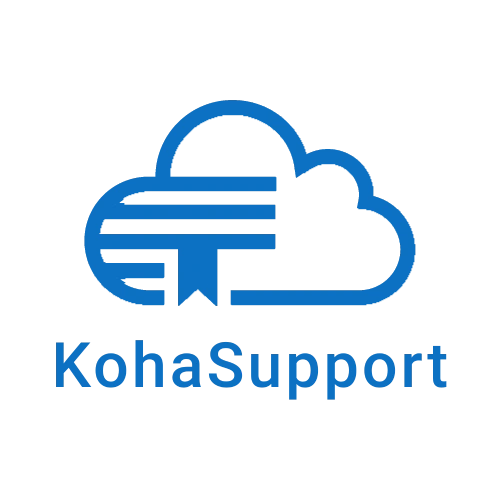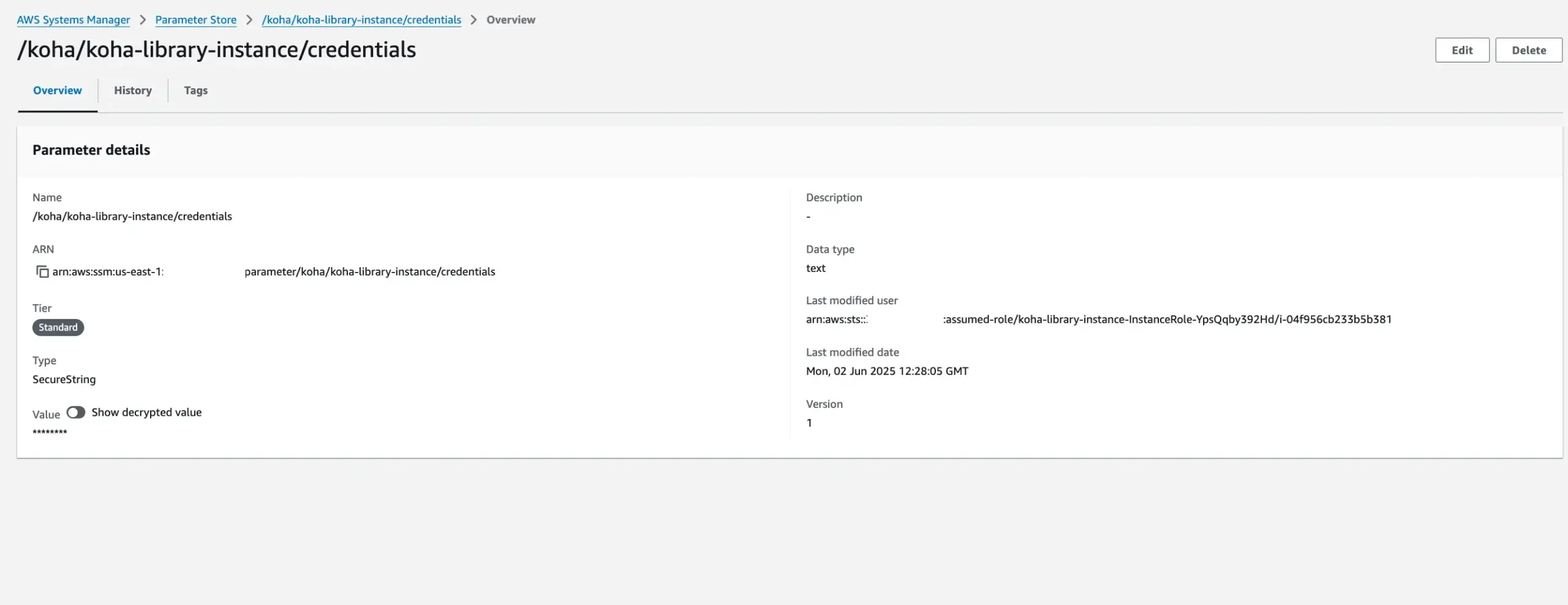How to run the Koha post-installation setup
1. Retrieve the Koha administrator password
There are two ways of getting the administrator password:
– Via AWS Systems Manager Parameter Store: CloudFormation template (recommended), go to the CloudFormation console > Stacks > Choose the stack name you created previously > Outputs > Make a note of the value of “KohaCredentialsSSMPath”. Go to AWS Systems Manager > Parameter Store > Open the Koha credentials SSM path > Toggle “Show decrypted value” > Retrieve the username and password.
– Via SSH: Go to the EC2 console > Instances > Select your Koha instance > Click “Connect” > EC2 Instance Connect (use “ubuntu” as the username) > Click “Connect”. In the terminal window, run the command “sudo koha-passwd library” > Note the username and password.
2. Login with the administrator username and password
Open the Koha staff URL (http://<your-server-ip-address>:8080) to begin the Koha post installation setup. You can also find this under CloudFormation > Stacks > Your Koha stack name > Outputs > KohaStaffURL. Enter the Koha administrator username and password and log in.
3. Choose your language
Choose your language and continue to the next step.

4. Check Perl modules
The Koha wizard will confirm that all the required Perl modules and dependencies have been installed. Continue to the next step.

5. Check the database connection
The Koha wizard will verify that the database has been created and connection is established. Continue to the next step.

6. Setup the database
The Koha wizard will setup the database, creating the necessary tables. Continue to the next step.

7. Select your MARC flavour.
Select the appropriate MARC flavour. Most libraries use MARC21.

8. Select default settings
Select the default settings for your library.
If you’re setting up the server for testing, trial, or demo purposes, we recommend enabling all optional settings. This will pre-load useful defaults such as cataloging frameworks, sample patrons, and Z39.50 servers.
For production environments, only enable the options you need. It’s best to exclude sample libraries, patrons, labels, and test data to avoid cluttering your live system.
Click “Import”

9. Launch the onboarding wizard
Click “Begin the onboarding process”.
10. Create the Koha "superlibrarian" patron
You will be prompted to create a patron with superlibrarian permissions. This user will full permissions to your Koha system. Click “Submit”
11. Create circulation rules
You will be prompted to create a circulation rule for your superlibrarian user. You can create more via the staff console later.
12. Log-in to your staff console.
This will be the primary interface you will use to manage your library, catalog, and patrons.

13. Log-in to your OPAC interface.
This will be the primary interface through which your patrons will search the catalog, place holds, and manage their accounts



